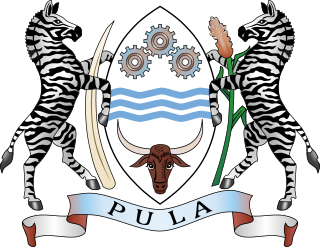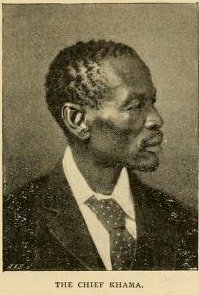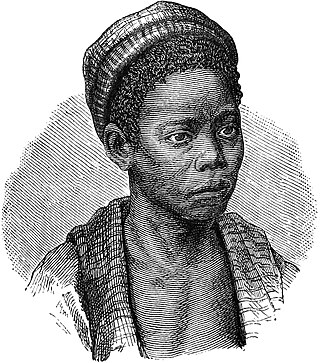The history of Botswana encompasses the region's ancient and tribal history, its colonisation as the Bechuanaland Protectorate, and the present-day Republic of Botswana. The first modern humans to inhabit Botswana were the San people, and agriculture first developed approximately 2,300 years ago. The first Bantu peoples arrived c. 200 AD, and the first Tswana people arrived about 200 years later. The Tswana people split into various tribes over the following thousand years as migrations within the region continued, culminating in the Difaqane in the late 18th century. European contact first occurred in 1816, which led to the Christianization of the region.

Botswana is a parliamentary republic in which the President of Botswana is both head of state and head of government. The nation's politics are based heavily on British parliamentary politics and on traditional Batswana chiefdom. The legislature is made up of the unicameral National Assembly and the advisory body of tribal chiefs, the Ntlo ya Dikgosi. The National Assembly chooses the president, but once in office the president has significant authority over the legislature with only limited separation of powers.

The Government of Botswana often abbreviated as GOB, is the union government created by the constitution of Botswana having the executive, parliament, and the judiciary. The Seat of the Government is located in Gaborone, Botswana. The government is led by the president.

Khama III, referred to by missionaries as Khama the Good also called Khama the Great, was the Kgosi of the Bangwato people.

The Tswana are a Bantu ethnic group native to Southern Africa. Ethnic Tswana made up approximately 85% of the population of Botswana in 2011.
The term Batlôkwa refers to several Kgatla communities that reside in Lesotho and South Africa.

Elections in Botswana take place within the framework of a multi-party democracy and a parliamentary system. The National Assembly is mostly directly elected, and in turn elects the President and some of its own members. The Ntlo ya Dikgosi is a mixture of appointed, hereditary and indirectly elected members.

The Ntlo ya Dikgosi in Botswana is an advisory body to the country's parliament.

Tonota is a village located in the Central District of Botswana.

A tribal chief, chieftain, or headman is a leader of a tribal society or of a chiefdom.
The Bamangwato is one of the eight "principal" Tswana chieftaincies of Botswana. The modern Bamangwato formed in the Central Serowe,Palapye & Mahalapye District, with its main town and capital at Serowe. The paramount chief, a hereditary position, occupies one of the fifteen places in Ntlo ya Dikgosi, the national House of Chiefs.

The Constitution of Botswana commenced on September 30, 1966.

The Three Dikgosi Monument is a bronze sculpture located in the Central Business District of Gaborone, Botswana. The statues depict three dikgosi, or tribal chiefs: Khama III, Sebele I, and Bathoen I. The three dikgosi played important roles in Botswana's independence. In 1895, the three men traveled to Great Britain to ask Joseph Chamberlain, Secretary of State for the Colonies, and Queen Victoria to separate the Bechuanaland Protectorate from Cecil Rhodes's British South Africa Company and Southern Rhodesia. Permission was then granted which made Botswana under direct British rule until its independence. There are six plinths giving information about Botswana's independence and struggles. A large coat of arms is featured in front of the three statues. A contract was given to North Korean company Mansudae Overseas Projects to build the monument, which resulted in disappointment from local sculptors. Some minority ethnic groups in Botswana see it as a decree of Tswana dominance.

A kgosi is the title for a hereditary leader of a Batswana and South Africa peoples tribe.

The Bogosi Act is a piece of legislation in Botswana that defines the office of bogosi or "chieftainship" among Botswana's various tribes. The act was written in response to the Balopi Commission recommendation that the Constitution of Botswana replace all references of the word "chief" to the Setswana word kgosi. The Bogosi Act replaces the earlier Chieftainship Act of 1987.
Mosadi Seboko is the Kgosikgolo of the Balete people in Botswana. She is the first female kgosikgolo in the history of Botswana.
Kgosi Puso Gaborone is the paramount chief (Kgosi) of the BaTlokwa tribe of Tlokweng in Botswana. As of 2021, he serves as the elected chairperson of Botswana's Ntlo ya Dikgosi, a position he has held since 2009.

Bathoen Seepapitso Gaseitsiwe also known as Bathoen II was a Motswana Kgosi, jurist and politician who served as Chief of the Bangwaketse from 1928 to 1969. He served as Chairman of the Botswana National Front (BNF) from 1966 to 1985, Leader of the Opposition from 1969 to 1984 and President of the Court of Appeal from 1985 until his death in 1990. He represented the Kanye South constituency in the National Assembly for three consecutive terms. As the leader of the BNF, the then second largest political party in the country, he was the main opponent of the Botswana Democratic Party (BDP) government, led by Seretse Khama and Quett Masire, during the first two decades of the African country's independence.
The History of Botswana includes its pre-state history, its colonial period as the Bechuanaland Protectorate, and its modern history as a sovereign state.

Kelebantse Sebele II was kgosi of the Kwena tribe in the Bechuanaland Protectorate. He succeeded his father, Sechele II, in 1918. Sebele quickly came into conflict with other members of his family and with the British colonial administration, which deemed him uncooperative and unstable.









